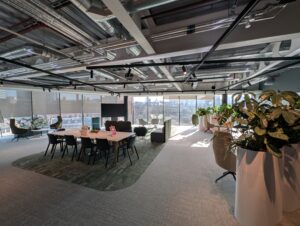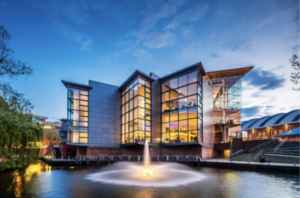One in five deaths a year in Barcelona are premature and most could be prevented if environmental factors such as air pollution and access to green spaces met internationally recommended levels, according to researchers
By 2050 almost 70% of people are projected to live in urban environments globally. Certain aspects of urban living, including contemporary car-centric city designs, contribute to a sedentary lifestyle and high levels of air pollution and noise, which are known to contribute to premature death.
In addition, cities experience increased heat exposure due to human activities and heat-amplifying effects of the built environment. Green infrastructure – such as parks, urban gardens and surrounding greenness – can reduce the impacts of these environmental risks and provides well-known benefits for physical and mental health.
A study led by researchers based in Spain and Switzerland estimated the difference between actual and recommended levels of physical inactivity, exposure to air pollution, noise, heat and insufficient access to green spaces in Barcelona.
Barcelona has one of the highest air pollution and noise levels in Europe due to high traffic density, with a high proportion of diesel vehicles, and an urban design of narrow street canyons (where streets are flanked by buildings on both sides) that are shielded by dense construction.
The city centre can be up to 8°C hotter than surrounding areas during summer months and only 7m2 of green space is available per resident; green spaces provide benefits in heat reduction and can mitigate traffic noise and possibly air pollution.
The researchers modelled preventable premature mortality and the increase in life expectancy for Barcelona residents if international recommendations for performance of physical activity and exposure to air pollution, noise, heat and provision of green spaces were met. They used existing recommendations as follows: physical activity – 150 minutes of moderate intensity or 75 minutes of vigorous intensity aerobic activity per week; noise – daytime noise levels not exceeding 55 decibels; air pollution – annual mean particulate matter less than 2.5 micrometers in diameter (PM2.5) not exceeding 10 micrograms per cubic metre of air (µg/m3).
Despite no recommendation being available for temperature, it is believed that with changes to the urban plan, such as increasing urban greenery, reducing motorised traffic and improving building design, a cooling effect of up to 4ºC can be achieved. The recommendation on availability of green spaces was taken from the European Commission’s working group Measuring, Monitoring and Evaluation in Local Sustainability and the World Health Organization, who both recommend living within 300m of green space greater than 0.5 hectares in size.
Researchers found that over 70% of adults in Barcelona are insufficiently active. Air pollution and traffic noise levels far exceeded the recommended levels. Summer temperatures in the city exceeded the calculated threshold level on approximately 100 days per year and one third of the population did not live within the recommended distance of a green space.
Life-saving benefits of greener cities
The researchers estimated that 2,904 premature deaths could be prevented annually if all recommendations were met. This is almost 20% of all annual natural deaths in the city. The largest share of preventable deaths was attributed to insufficient physical activity (1,154), followed by air pollution (659), traffic noise (599) and heat (376). Access to green spaces was estimated to have the smallest impact on reducing premature mortality (116).
If these premature deaths were prevented, residents could expect to live, on average, 360 days longer. This benefit to society is valued at around €9.1bn annually (based on the value-of-statistical-life approach (VoSL) — the amount of money people are willing to spend to save a statistical life).
The researchers acknowledged the combined effects of the different environmental hazards were not modelled, resulting in potential double counting of deaths. On the other hand, air pollution deaths may also have been underestimated, as certain pollutants, such as nitrogen dioxides, were not considered in this study.
Researchers also acknowledge the limited scientific evidence on the adverse health impacts of noise exposure and beneficial impacts of green spaces. They also point out that the contextual setting and underlying population parameters, such as the general health of the population, personal choices, motivation for behavioural change and time lags between a change and a benefit in any given location, affect human health and the risk of death.
However, the research does contribute to the understanding of multiple environmental exposures and associated health impacts in an urban setting.
Fundamental changes to urban and transport planning are needed, say the researchers. In particular, the use of active and public transport as a means of integrating physical activity into daily life. Policies to reduce motorised traffic and promote active and cleaner modes of transport should therefore be prioritised. Reinforcement of green infrastructure can also promote engagement in physical activity, mitigate air pollution, noise and heat and has been associated with improvements in mental health, biodiversity and community benefits.
- Source: Science for Environment Policy, October 28, 2016, Greener cities and more exercise could dramatically reduce urban mortality rates. European Commission DG Environment News Alert Service, edited by SCU, The University of the West of England, Bristol. To access articles and to subscribe, please go to http://ec.europa.eu/science-environment-policy














